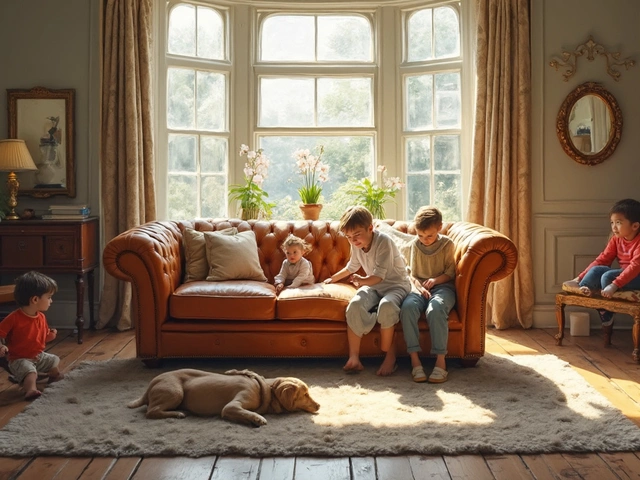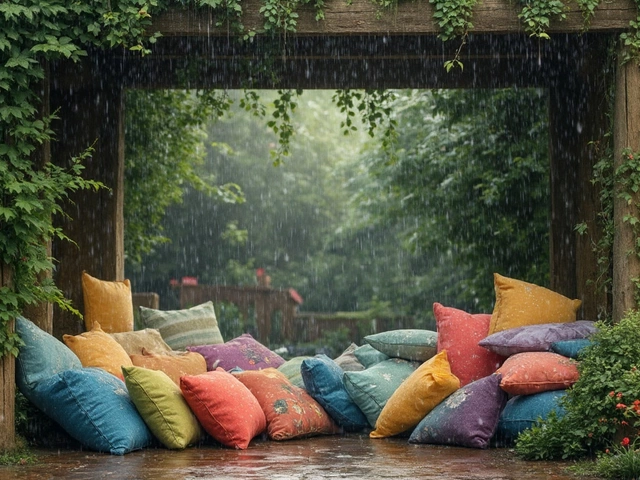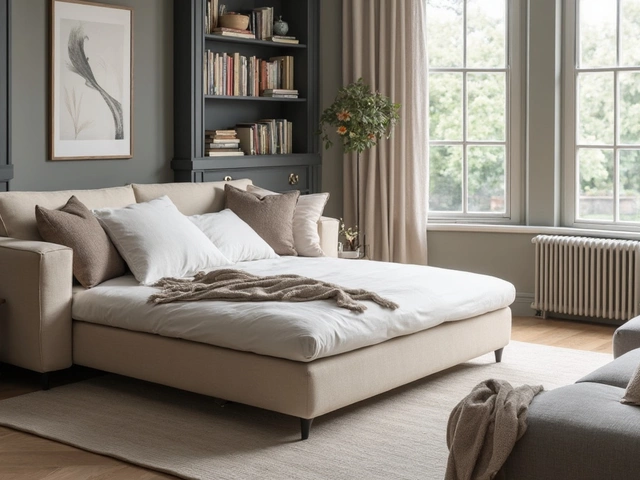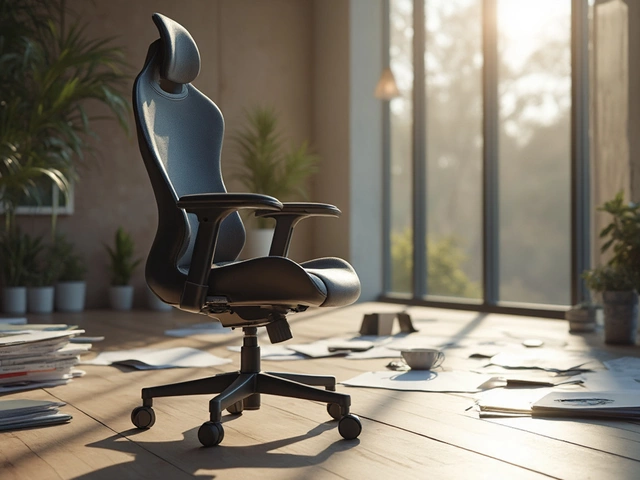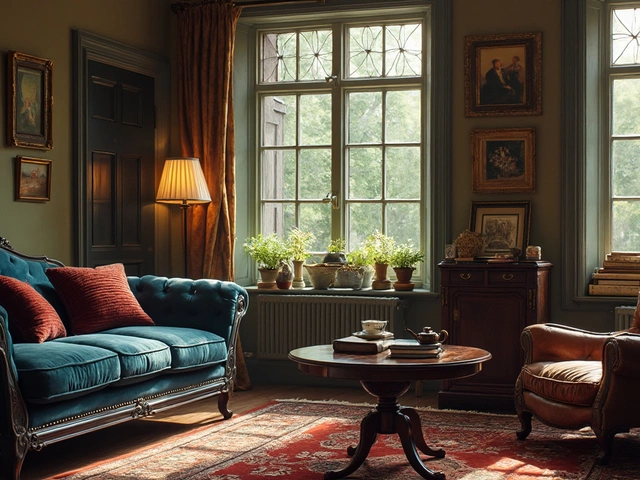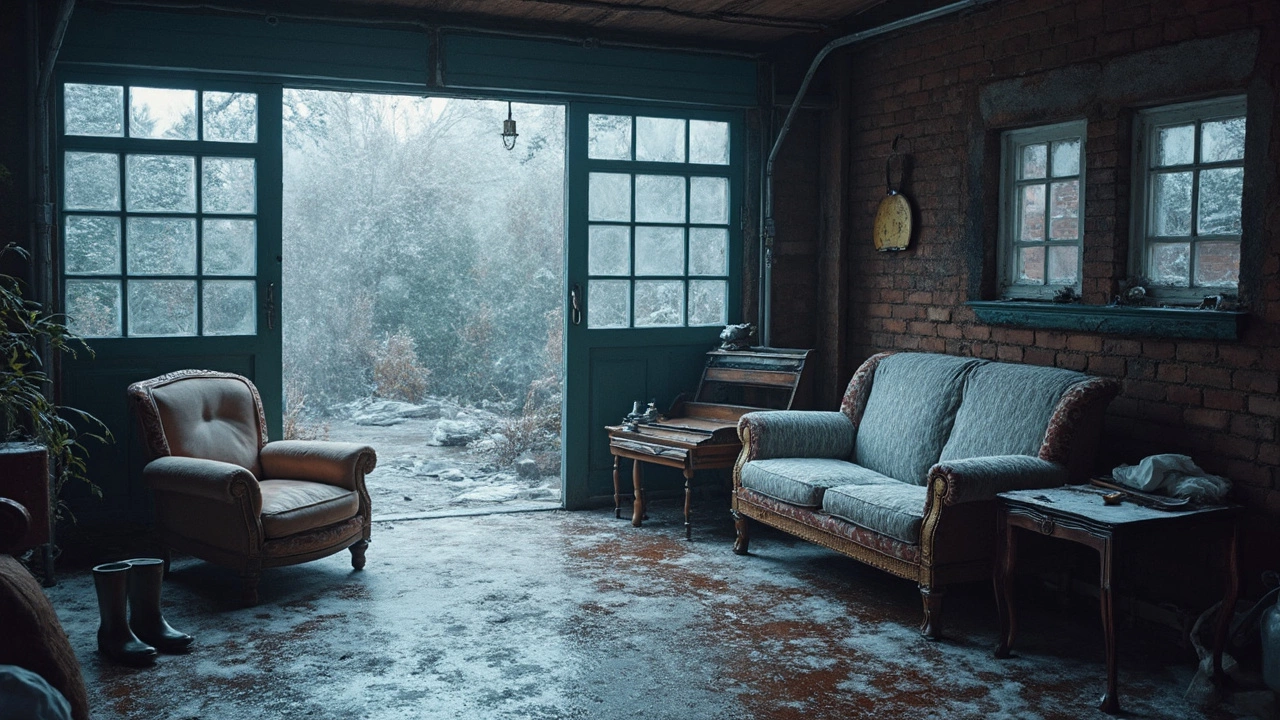 17
Apr,2025
17
Apr,2025
So you’re running out of indoor space, and that cold garage is calling your name. Can you just shove your furniture in there and hope for the best? Not so fast. The truth is, cold garages can mess with your furniture in ways you might not expect. Between freezing temps, wild humidity swings, and the occasional critter looking for shelter, furniture isn’t always safe out there.
Think about it—wood can crack, metal might rust, and fabrics could turn musty or even moldy if dampness creeps in. But here’s the thing: not all furniture reacts the same way. Some pieces might tough it out just fine, while others basically throw in the towel at the first chill.
The good news? With the right know-how, you can boost your furniture’s chances of surviving the winter in your garage. This article’s got your back, breaking down the best moves to keep your stuff safe from cold-weather nightmares. Before you start hauling things outside, let’s look at what really happens when furniture faces down a cold garage.
- Cold Garages: What Happens to Furniture?
- What Types of Furniture Handle Cold Best
- Wood vs. Metal vs. Fabric: How Each Reacts
- Preventing Damage in a Cold Garage
- Smart Storage Hacks for Chilly Spaces
- When a Cold Garage Just Won’t Cut It
Cold Garages: What Happens to Furniture?
Storing your stuff in a chilly garage sounds simple, but cold temperatures can hit furniture storage hard. When the temperature drops, materials react fast. Wood tries to shrink, so you might find it warping or cracking over time. That sturdy dining table or bookshelf in the garage? If the air goes below freezing at night, it’s at risk of splitting, especially if there’s any leftover moisture in the wood itself.
Humidity’s another villain. During winter, cold air doesn’t hold much moisture, but as temps rise and fall, condensation can pop up on surfaces. This spells trouble for fabric (think ugly water stains or even mold patches) and can make metal legs or hardware rust. About one in three folks who store furniture in unheated garages report rust or mildew after just a few months.
Let’s not forget about plastic pieces — they're not invincible either. While plastics don’t warp like wood, they can get brittle and crack if things get frosty enough. And any kind of foam padding or cushions? Cold plus moisture equals that familiar musty smell nobody wants in their house.
Here’s a quick look at what usually happens to different types of furniture in a cold, unheated garage:
- Wood: Shrinks, warps, cracks, or peels under low temps and changing humidity.
- Metal: Can rust if condensation forms, especially on screws and legs.
- Fabric: Absorbs moisture, gets mildewy or musty, and sometimes develops actual mold.
- Plastic: Turns brittle, can snap if bumped or handled roughly in the cold.
Even if you clean things well before storing, pests and critters sometimes get in, drawn by cool hiding spots or leftover crumbs. They can chew holes in fabric and leave a mess behind. So, cold isn’t the only thing to worry about in your cold garage.
If you’re using your garage for storage tips, just know the cold isn’t friendly. But you can make choices to protect your stuff—more on that coming up.
What Types of Furniture Handle Cold Best
Not all furniture storage plans are created equal when you’re working with a cold garage. Some pieces barely notice the temperature drop—while others take a beating. If you want to avoid nasty surprises, here’s what holds up and what to skip.
Solid wood furniture (like old-school hardwood tables or solid oak chairs) can manage cold better than softwoods or chipboard. These woods don’t expand or contract as much with temperature swings, but they’re still not totally immune—unsealed wood can crack or warp if it gets too cold or damp. Pre-finished wood fares much better, especially if it’s got a good layer of sealant to block out moisture.
Pure metal furniture (think steel shelving units or aluminum outdoor chairs) laughs off freezing temperatures and sudden chills. Sure, metal might get icy to the touch, but it doesn’t crack or break down. The only real risk is rust—so make sure chrome, wrought iron, or steel is properly painted or treated. Stainless steel barely flinches in cold and resists even high humidity—no extra work needed.
Plastic is a wildcard. Thick, heavy-duty plastics used in utility shelves or storage benches can usually handle garage cold. Ultra-cheap plastic? It gets brittle and may crack if you bump it in freezing weather. Test it—if it’s the bendy kind, you’re safer; if it’s hard and thin, keep it indoors.
Upholstered and fabric-covered furniture doesn’t like cold or humidity one bit. Even with a heavy tarp, fabric traps moisture, and foam or stuffing can turn musty or even moldy. Unless it’s a visit for just a week or two, skip storing sofas or mattresses in a garage with no climate control.
- Laminate furniture (like those IKEA dressers) won’t tolerate cold well. The adhesive that keeps the finish on can fail, so if you must, wrap it extra tight or keep it somewhere a bit warmer.
- Furniture with a lot of joints or veneer might also fall apart in low temps due to glue loosening. Inspect before storing—and avoid storing heirlooms outside if you really care about them.
If you want a quick cheat sheet, here’s how different materials generally stack up in a cold garage:
| Material | Handles Cold? | Biggest Risk |
|---|---|---|
| Solid Wood | Moderate | Cracking, warping |
| Metal | High | Rust |
| Plastic | Moderate | Brittleness |
| Laminates | Low | Peeling, glue failure |
| Fabric/Upholstered | Low | Mold, mustiness |
Bottom line: sturdy metal shelves or well-finished hardwoods have the best shot at surviving in a cold garage. Anything padded, glued, or made of cheap thin plastic—skip it or you’ll regret it.
Wood vs. Metal vs. Fabric: How Each Reacts
Different materials just don’t play by the same rules when you throw them into a cold garage. You might expect your grandma’s oak dresser, your metal patio chairs, and your comfy old couch to react the same way to freezing temperatures, but they’re totally different battles.
Wood furniture is the pickiest. Cold and dry air draws moisture right out of the wood, which can lead to cracking and splitting—especially if it’s solid wood or veneer. Ever seen a table top suddenly warp or joints that get wobbly? That’s the wood swelling and shrinking as temps swing up and down. The glues that hold joints together can also weaken or just stop sticking.
Here’s a quick look at common furniture types and what to expect:
| Material | What Happens in Cold Garage? |
|---|---|
| Wood | Cracks, warps, joints loosen |
| Metal | Rust, corrosion, paint can flake off |
| Fabric | Mildew, mold, musty smells |
If you’ve got anything with metal—frames, hinges, or screws—cold and moisture are a nasty combo. Metal won’t crack from cold, but the big problem is rust and corrosion, especially if your garage gets damp. Once rust sets in, it eats away at the metal fast. Painted surfaces? They can start to blister and peel if the temperature swings a lot.
And then there’s fabric furniture. Couches, cushions, even padded dining chairs are like mold magnets if the air in your garage isn’t bone dry. Cold air doesn’t actually cause mildew, it’s the dampness that hangs around during winter thaw or those rainy days. Fabrics can hold on to that moisture and before you know it—nasty smells or actual mold spots.
If you’re set on moving your furniture storage into a cold garage, here’s a basic rundown to keep in mind:
- Wood: Seal it if you can. Wax or oil finishes help, and cover pieces with moving blankets instead of tight plastic (to let them breathe).
- Metal: Wipe everything down and, if possible, spray exposed spots with a little WD-40 or anti-rust spray.
- Fabric: Store only if it’s totally dry. Bag cushions in breathable covers and pop in some moisture absorbers, like silica gel packs.
The bottom line? Each type of furniture has its own cold-weather problem. The trick is knowing what weaknesses they have before you drag that couch, desk, or shelf into the garage.
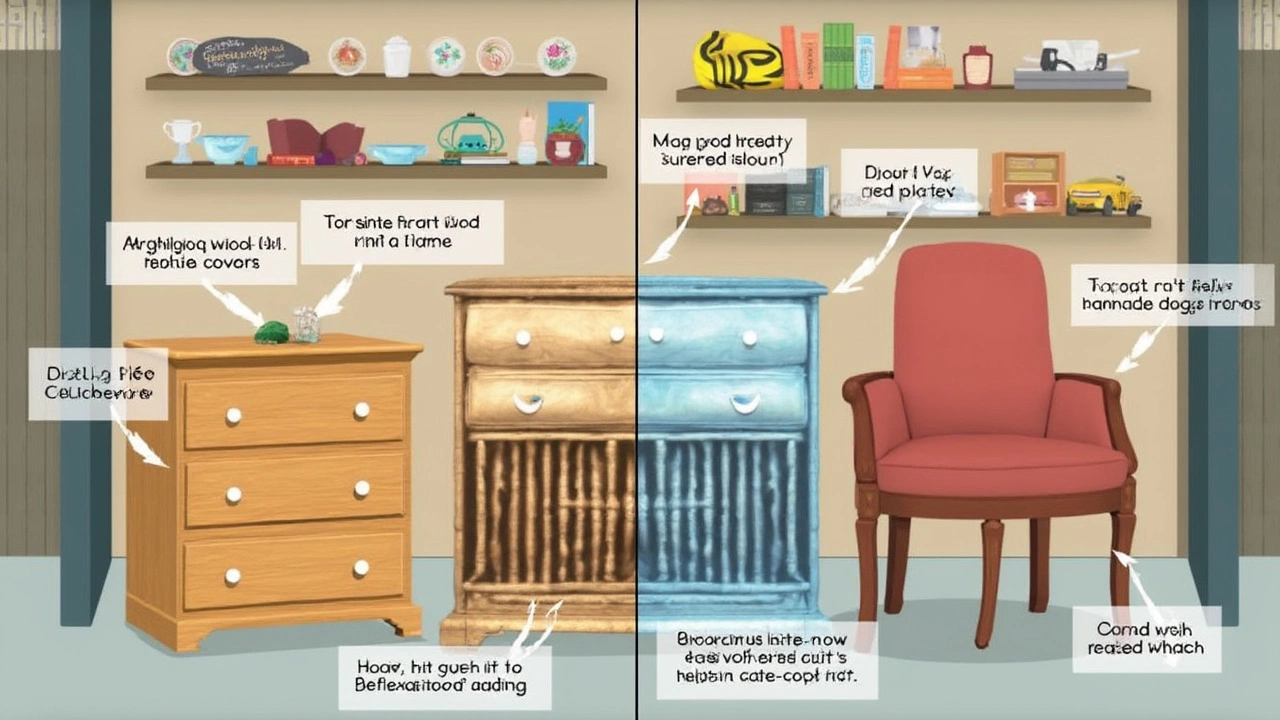
Preventing Damage in a Cold Garage
If you really want to use your garage for furniture storage, you’ve got to play defense against the cold, damp, and pests. Cold temps and wild humidity swings are a nightmare for wood, fabric, and even some metals. Here’s how you keep your stuff in good shape—even when the garage turns into a meat locker.
- Seal up your garage: Gaps around windows and doors let in extra moisture and freezing air. Weatherstripping only costs a few bucks and keeps that out. If possible, throw in a door sweep at the bottom for bonus points.
- Use pallets or risers: Never put furniture right on the concrete. It’s colder down there, and moisture seeps up fast. Get your pieces up a couple inches with pallets, cinder blocks, or even thick plastic sheeting. This protects wood and fabric from getting musty.
- Wrap it up smart: Plastic tarps work for metal or plastic furniture, but for wood and anything with fabric, breathable covers like cotton sheets do better. Full plastic traps moisture and can turn wood soft and fabrics moldy.
- Control humidity, if you can: Humidity is the secret villain in winter. If your garage gets damp, run a dehumidifier now and then, or at least put out some moisture absorber tubs (you’ll find those at any big-box hardware store).
- Pest-proof everything: Mice love a cozy, hidden spot. Close up holes and check your stuff for any signs of chew marks or nesting. Sprinkling a little peppermint oil nearby actually helps keep rodents away. Sounds weird, but it works better than some old wives’ tales.
If you’re storing stuff for more than a season, check in every month or so. Catching a mold spot early is way better than dealing with a ruined couch later.
| Problem | Prevention Tip |
|---|---|
| Wood warping or cracking | Keep off concrete, wrap with breathable covers |
| Fabric mildew | Use dehumidifiers, avoid plastic wrap |
| Metal rusting | Ensure pieces are dry before storing, cover lightly |
Treat your storage furniture the way you’d treat something you actually want to use again. Trust me, it beats dumping a ruined coffee table at the curb next spring.
Smart Storage Hacks for Chilly Spaces
Turning your cold garage into a safe zone for furniture storage takes more than stacking boxes and crossing your fingers. Instead, use a few proven hacks to block damage and keep your stuff looking good, even when the temps dip below freezing.
- Keep Furniture Off the Concrete—The floor in a garage gets colder than you think. Throw down pallets, thick cardboard, or even old rugs. This little buffer protects wood, keeps moisture at bay, and stops that bone-chilling cold from creeping up.
- Wrap It Right—Don’t put plastic right up against wood or fabric. It can trap moisture. Instead, use moving blankets, old sheets, or even breathable covers. They let air flow and keep dust and frost out.
- Control Humidity—Cold garages love to swing between damp and dry. Toss in a basic dehumidifier or a few tubs of silica gel to suck up extra moisture. Some folks swear by charcoal briquettes—they absorb humidity too!
- Seal the Gaps—Cold air whistles in through those tiny cracks in your garage. Use weather stripping or foam tape around doors and windows. It won’t turn your garage into the Ritz, but it’ll help stabilize temps and block wet air.
- Lift and Separate—Don’t let pieces rest against each other. Air flow is your friend. Leave gaps between items so cold spots and moisture don’t hide in tight spaces.
- Use Space Wisely—Stack lighter, sturdier furniture on top and leave fragile pieces on the bottom. If your garage has rafters or shelves, use them for smaller items so you’re not crowding the ground.
If you want a quick peek at how these hacks can help, check this out:
| Storage Hack | How It Helps |
|---|---|
| Pallets under furniture | Blocks cold and moisture from concrete floor |
| Breathable covers | Prevents mold, avoids trapping humidity |
| Dehumidifier/silica gel | Keeps furniture storage area dry |
| Weather stripping | Stabilizes temperature, blocks drafts |
Just a handful of these tips can give your furniture storage in a cold garage a real advantage. It’s not rocket science—just smart planning that pays off when winter shows up.
When a Cold Garage Just Won’t Cut It
Sometimes, no matter how many tips or tricks you use, a cold garage just isn’t a safe place for your stuff. You can’t simply toss antiques, fancy wooden dressers, or anything upholstered out there and expect them to stay in good shape. Extreme temps, lots of moisture, and wild temp swings are just too much for certain furniture.
If your furniture storage involves anything expensive, sentimental, or made from delicate materials (think: solid wood, leather, high-end electronics built into furniture), keep it out of freezing storage. Wood can warp or crack, and leather gets dry, stiff, and can even peel. Electronics and batteries can straight-up stop working, even if they’re attached to a piece of furniture.
It’s not just about looks, either. For renters, damage caused to stored furniture could hit your deposit hard if you’re returning to a furnished place. And if there’s any possibility of rodents getting in (which is pretty common in garages), fabric and soft woods might become chew toys or nesting material overnight. To put it simply, some pieces just belong indoors, period.
- Fine wooden furniture or antiques
- Mattresses and upholstered chairs/sofas
- Leather recliners or couches
- Furniture with built-in electronics or moving parts
- Anything super valuable or impossible to replace
If leaving those pieces in the house isn’t an option, look into other solutions. Climate-controlled storage units are a safer bet. On average, these units keep temps between 55°F and 80°F year-round, and humidity is controlled so you skip the whole mold problem. The U.S. self storage industry reports around 47,000 facilities nationwide, with climate-controlled options getting more popular every year.
Not ready to rent a unit? See if you can score some extra space in a friend’s basement or a dry corner of your own home. The key is keeping anything sensitive away from cold, moisture, and wild weather changes.
Your furniture protection and storage tips don’t mean much if you ignore the realities of your garage. When the risks are high, spend a little extra effort now so you’re not stuck throwing money away later.
